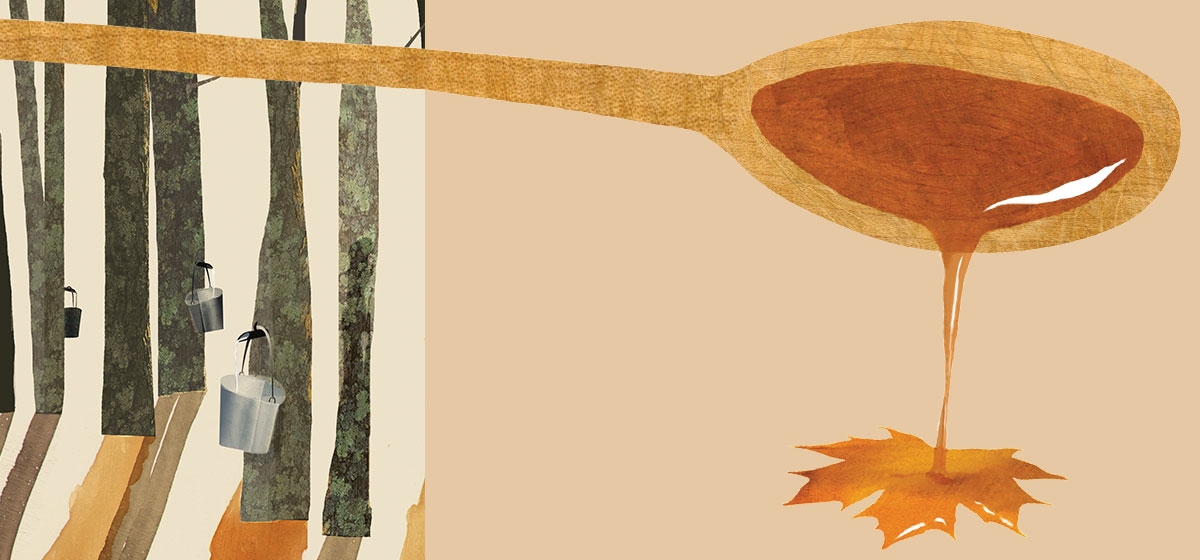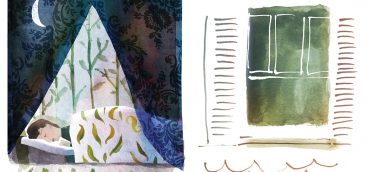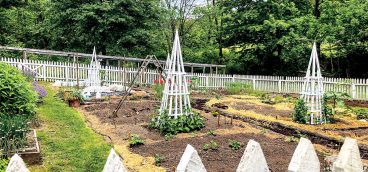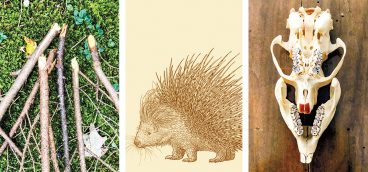Making Maple Syrup

What
is this?—syrup, maple syrup
in a quart jar, syrup
my grandfather made twenty-five
years ago
for the last time.
I remember
coming to the farm in March
in sugaring time, as a small boy.
He carried the pails of sap, sixteen-quart
buckets, dangling from each end
of a wooden yoke
that lay across his shoulders, and emptied them
into a vat in the saphouse
where fire burned day and night
for a week.
Now the saphouse
tilts, nearly to the ground,
like someone exhausted
to the point of death, and next winter
when snow piles three feet thick
on the roofs of the cold farm,
the saphouse will shudder and slide
with the snow to the ground.
Today
we take my grandfather’s last
quart of syrup
upstairs, holding it gingerly,
and we wash off twenty-five years
of dirt, and we pull
and pry the lid up, cutting the stiff,
dried rubber gasket, and dip our fingers
in, you and I both, and taste
the sweetness, you for the first time,
the sweetness preserved, of a dead man
in the kitchen he left
when his body slid
like anyone’s into the ground.
—“Maple Syrup,” by Donald Hall
I stuck a spoon in the finishing pan and tasted the sap—sweet, but too thin, said my friend teaching me how to make maple syrup. At 89, he’s been sugaring on his family farm for nearly 50 years, and now he’s instructing his grand-nephews, the fourth generation. Last year they kindly allowed me to tag along.
It wasn’t going well. Warm temperatures in late winter and early spring were challenging syrup makers across the southwestern part of our state. The nights got too warm, the sap slowed, and they worried the end product wouldn’t be any good.
Temperature is just one of many factors that can affect syrup. The type of tree matters, the soil it’s planted in, and when it’s tapped. Wind can slow the dripping of the sap, and if the trees begin to bud, the liquid becomes what’s called “buddy syrup” and is ruined.
The process is labor intensive. The sugar camp needs to be tidied, firewood chopped, and materials organized: buckets, lids, spiles, thermometers, filters, jugs and more. And it’s time consuming—a 24-hour-a-day job—since it takes 43 gallons of sap to make one gallon of syrup, and because sap, a colorless liquid resembling water with a 2 percent sugar content, must be cooked down to 66 percent sugar. Sometimes my friend sleeps overnight at the camp. The fire needs to be stoked, the temperature taken (the end goal is approximately 219 degrees, or seven degrees above water’s boiling point) and the liquid mustn’t boil over or burn. “If you don’t keep your eye on it,” he said, “something happens.”
Pennsylvania’s sugaring season typically takes place in February and March and lasts six weeks, but that’s changing. Dr. Timothy Perkins, director of the Proctor Maple Research Center at the University of Vermont, believes climate change has shifted the season to earlier in the year, causing “uncertainty for producers.” Last year’s weather was even weirder—“backward,” my friend said—cold in fall when it should have been warm, and warm in winter when it should have been cold. In a half-century, he couldn’t remember a worse sugaring year.
Ideal sugaring weather is when nights are below freezing and days are in the 40s. Warming temperatures create pressure within the tree, forcing sap—or starch stored in the wood—to be released. The aptly named sugar maple (acer sacchurum) is the most commonly tapped tree because of its high sugar content. A 12-inch diameter tree, about 40 years old, generally gets one tap; larger trees might get more, three at the most.
Legends abound as to how maple syrup was discovered. One says an Iroquois chief threw a tomahawk into a tree at night, the weather warmed, and the next day his wife used sap instead of water to cook venison, sweetening the dish. Dr. Perkins said Native Americans probably learned from watching birds and animals, particularly squirrels. In early spring on windy, sunny days, squirrels nip shallow grooves into maple branches, wait for the sap to dry into sugar granules, and eat it. Native Americans likely taught English and French settlers, and a sizable industry was born.
Canada produces the most syrup in the world, 12.2 million gallons valued at $487 million, of which Quebec accounts for 92 percent. The United States produces about 4.2 million gallons valued at $147 million, with Vermont the largest producer at half a million gallons. Pennsylvania ranks from fifth to seventh, according to Penn State, producing 60,000 gallons per year, valued at $1.9 million. Somerset County is our state’s biggest producer.
Modern-day commercial operations involve vacuums attached to plastic tubing running directly from tree to sugar camp, and reverse osmosis, invented in the 1970s, which removes water from the sap before boiling. The latter changes syrup’s taste, my friend claimed, but Dr. Perkins said his center has conducted studies comparing what he termed “techno syrup” with syrup made by more traditional methods, and people can’t tell the difference.
We made our syrup in a more old-fashioned way, going out into the sugarbush on a perfect day—41 degrees and sunny—drilling holes, plugging them with spiles, and hanging galvanized tin buckets. We collected the sap by hand. I also tapped trees on my property and added it to the lot. Granted we transported the sap to the sugar camp via an all-terrain vehicle— alas, we had neither wooden yoke nor horse-drawn sleigh as in the old days—but it still felt as if we were performing a task few do anymore.
We poured the sap into a holding tank, through a filtration system of wool felt to remove any impurities, into a wood-fired evaporator, and finally a finishing pan. The USDA has three Grade A syrup classifications: light amber; medium amber; and dark amber; and one Grade B, which is darker, with a stronger maple flavor. I prefer early syrup, generally lighter in color with a milder taste, but it’s difficult to come by, so I put whatever grade syrup I can get into my green tea each morning.
Some of our syrup was bottled, but in the end all of it had to be thrown away. It tasted terrible. Dr. Perkins asked me what went wrong, but I had no idea, so asked him the same question. Two possible explanations were we didn’t boil the sap soon enough—sap must be boiled right away or it can ferment. Or, that we boiled some sap and later added more to the same batch, which can make syrup “ropey or stringy,” he said. “One of the hardest parts of this job is trying to diagnose the failures.”
I doubt we’ll ever know for sure, but I do know my friend and his family will be back at it this year, welcoming company in the sugar camp to help pass the hours. People do stop by and say hello, bring snacks and offer assistance, but nothing like the old days when they had lots of help. People are too busy now, he said, too plugged-in to step back in time. But you’ll find me there in February, unplugged, hoping for sweeter results.





